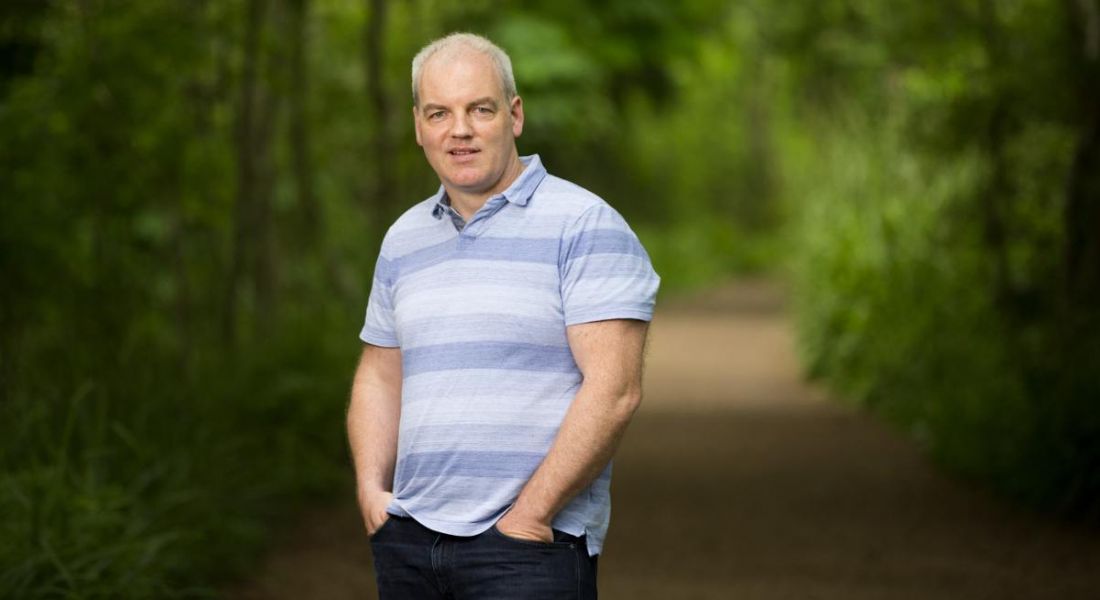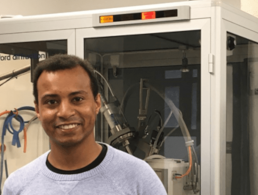The research currently being carried out around the world has the power to change lives. But what do we actually know about it?
Tadhg E MacIntyre, lecturer and researcher at the Health Research Institute (HRI), University of Limerick (UL), talks us through his research into the societal and environmental impacts of ‘green exercise’, and explains why science advocacy is so important right now.
What is your role within this company/organisation?
Lecturer in performance psychology, faculty research champion role for early career researchers, and mental health focus area champion within the health services delivery theme of the HRI.
What steps led you to the role you have now?
Prior to 2012, I was a lecturer at Ulster University in Jordanstown for seven years, and course director of their master’s in sport psychology.
Since arriving in my post at UL, I have established a new master’s programme in sport, exercise and performance psychology, and have had the pleasure of working as the Munster rugby sport psychologist for two seasons.
The latter role shifted my research focus, from concerns with performance enhancement to an emphasis on understanding how to promote mental wellbeing and positive lifestyle behaviours.
Can you tell us about the research you’re currently working on?
Intuitively, we all ‘know’ that contact with nature is good for wellbeing. The question our research consortium is trying to answer is how human-nature interactions promote wellbeing, reduce stress and increase attention.
For instance, green exercise – physical activity in natural spaces – has been linked to the aforementioned positive changes but, typically, studies have simply put people in natural spaces with a lack of control over what participants attend to (eg, mind wandering) or what pace they move at (eg, jog versus fast run). Our approach is based on the concept of generating a greater neural footprint for green exercise compared to gym-based training, ie making outdoor exercise more memorable.
We couple technology, exercise and nature engagement to optimise the experience by providing personalised information both pre- and post-exercise. For example, after someone experiences green exercise, viewing images of the natural setting on their phone can be employed to evoke the positive emotions they had again. This is termed nature savouring and it is a powerful pathway to wellbeing.
What first stirred your interest in this area?
One consulting technique I had employed in my role as sport psychologist with various teams and athletes over the past 15 years was ‘walk and talk’. This swapped the traditional sit-down consult for a ramble across our green campus, exposing the clients to the benefits of nature in addition to the therapeutic alliance. A new publication in American Psychologist supports this activity for promoting wellbeing and conflict resolution, and it piqued my interest in nature-based solutions for wellbeing.
If there is such a thing, can you describe a typical day for you?
My days are either green or blue. That is, they either begin or end with a bout of exercise, usually in the outdoors. Open-water swimming is seasonal, whereas a campus jog along the river Shannon is a must all year round.
Grant writing is an intense activity and, during these periods, you end up working with colleagues across multiple time zones, working from 8am until very late, with at least one meal in which you can savour your food.
Coffee fuels research, and I’m grateful to my collaborator, Giles, who has a very fine Nespresso machine.
What skills and tools do you use on a daily basis?
Communication tools including Prezi, Keynote, MindMup (mind mapping) and Kahoot (online quizzes); research tools such as Survey Monkey and Qualtrics; data analysis software including SPSS and NVivo; and research management tools such as Trello.
And a caffeine app that enables the computer to stay awake much longer than I do.
What applications do you foresee for this research?
Boosted green exercise has the potential to address three major societal issues: climate change, physical inactivity, and mental health and wellbeing.
European projects on nature-based solutions have explored the potential impact on wellbeing, but our transdisciplinary approach – basically developing a new lens to address the issues rather than use the scientific paradigm of one discipline – is unique. We can simultaneously explore the impact of air quality, physical activity, individual differences and richness of the environment, using tools from environmental sciences, sport sciences, neuroscience and the psychological sciences.
Are there any common misconceptions about this area of research?
To paraphrase Gordon Gekko: “Green is good, green is right, and green works.”
Green exercise is not a hard sell. The challenge is to explore the benefits, the co-benefits and the limits. For example, for whom is it best – urban dwellers or those living in rural communities? Does green exercise change our attitude towards the environment and change our behaviours – encouraging more recycling – and what are the mechanisms that underlie these benefits (eg visual stimulus of the leaf patterns on trees, air quality, reduced noise, more robust memories)?
We can employ tools – including eye-tracking, fMRI, scene analysis (eg measuring structure and complexity of natural scenes) and research designs from randomised controlled trials to case studies and surveys – to investigate these questions.
When you first started work as a researcher, what were you most surprised to learn was important in the role?
Communication, communication, communication.
Researchers are perhaps skilled in knowledge-sharing among our academic peer group. However, given the threat of alternative truths, we now have a priority not simply to share our findings, but to be science advocates.
Initiatives such as Pint of Science provide opportunities to hone these skills but, ideally, a broader toolkit for communicating our ideas – like how to develop infographics – should be embedded in the training for early career researchers.
What do you enjoy most about your career in research?
Change. We have the opportunity to shift our research from singular topics – mine was mental imagery or visualisation and skill acquisition – to a grand societal challenge. You can choose to work with great collaborators and challenge yourself to learn about not simply the burden of societal challenges, but the opportunities they present for researchers.
Change is good, change is right, change works.
Calling all researchers! Showcase your research in front of an international audience at Researchfest 2017. Find out how to enter here.




